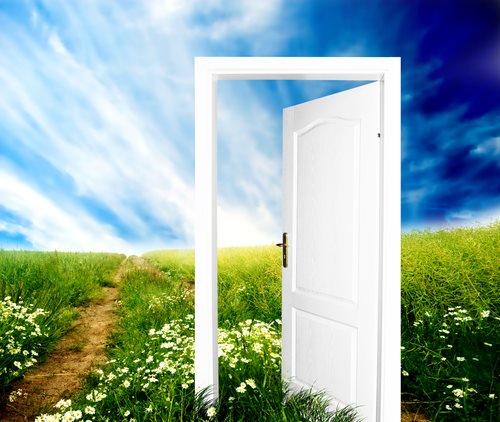Finalized $14.5 Million Cleanup Plan for Holley NY







On November 27, 2012, the UN Environment Programme (UNEP) warned that thawing permafrost will likely increase the effects of global warming in the coming years. During discussions at Doha, UNEP issued a new report that permafrost in the northern hemisphere contains about 1,700 gigatonnes of carbon. 1,700 Gt is twice the amount currently in the atmosphere, and accelerated thawing could have devastating effects.
Greenhouse gas emissions from melting permafrost are not currently factored into greenhouse estimates. The report by UNEP encouraged a special IPCC assessment to help create monitoring networks and plans for adaptation.
The UN Under-Secretary General and UNEP Executive Director, Achim Steiner, stated: “Permafrost is one of the keys to the planet's future because it contains large stores of frozen organic matter that, if thawed and released into the atmosphere, would amplify current global warming and propel us to a warmer world.”
According to current estimates, warming permafrost may emit 43 to 135 gigatonnes of carbon dioxide by 2100 and even 246 to 415 gigatonnes by 2200. Ultimately, permafrost emissions could account for 39 percent of the world’s emissions.
The lead author of the UNEP’s report warned that warming permafrost emissions need to factor into the new treaty on climate change at Doha that may replace the former Kyoto Protocol.
The report recommends the following to address economic, social, and environmental factors associated with global:
· the IPCC report needs to address how carbon dioxide and methane emissions from permafrost influence trends in global warming in order to further support discussion on policy and treaty negotiations
· countries should start operating their own monitoring sites, increase funding for these monitoring sites, and expand testing
· expansion of monitoring needs to occur particularly in Russia, Canada, China, and the United States
· the International Permafrost Association should encourage national monitoring networks but remain part of the Global Terrestrial Network for Permafrost as well
· countries, especially the four listed above, need to evaluate how melting permafrost damages and degrades infrastructure
Thawing permafrost can make building foundations, roads, pipelines, railways, and power lines weak. The world’s largest terrestrial oil spill in Northern Russia in 1994 was a powerful example of the damage thawing permafrost can cause.
Kevin Schaefer with the University of Colorado National Snow and Ice Data Center stated, “Thawing permafrost represents a dramatic physical change with huge impacts to ecosystems and human infrastructure. Individual nations need to develop plans to evaluate the risks, costs, and mitigation strategies to protect human infrastructure in permafrost regions most vulnerable to thaw.”
Source: UN Environment Programme

On September 24, 2012, a veterinary health products company called Boehringer Ingelheim Vetmedica, Inc. settled with the US Environmental Protection Agency and agreed to pay a $68,475 civil penalty. The penalty will be paid to the United States because of violations within the Resource Conservation Recovery Act. According to the EPA, the company “mishandled” mercury waste in St. Joseph, MO.
The EPA reports the following specific violations:
· the failure to determine hazardous waste levels in various streams
· the storage of hazardous waste without a RCRA permit
· failure to meet generator requirements
· sending waste containing mercury to non-authorized sites
· the transportation of hazardous waste without proper license of manifest
· failing to meet waste lamp requirements
· failing to meet recycled oil use requirements
EPA representatives went to inspect the facilities at the St. Joseph location in May of 2010 and found the above violations under the federal Resource Conservation and Recovery Act—the main Act controlling the use of hazardous waste.
The EPA indicates that the veterinary health products company produces mercury within its vaccine production process.
In addition to the civil penalty, the veterinary company is also required to build an innovative $300,000 hazardous waste storage facility. After agreeing to the settlement, Boehringer Ingelheim Vetmedica, Inc. is now certified under all RCRA regulations.
Karl Brooks, the EPA Region 7 Administrator, states, “The proper handling and management of hazardous waste is an integral part of protecting human health and the environment. In the event of an accidental release on site or while in transport, proper labeling, storing, and management practices can help reduce the risk of exposure to hazardous material by response personnel as well as reduce risk to public health by identifying the necessary and proper cleanup methods.”
Source: Environmental Protection Agency

On September 20, 2012, the U.S. Environmental Protection Agency announced the launch of the Sustainable Materials Management Electronics Challenge (SMM). The initiate encourages manufacturers and retailers to make recycling and refurbishing a standard within the electronics industry.
During the announcement, Lisa Feldt, the EPA Deputy Assistant Administrator for Solid Waste and Emergency Response, was joined by major leaders like Best Buy, LG Electronics, Panasonic, Samsung, Sharp, and Staples. The announcement occurred at the Vintage Tech Recyclers in Romeoville, Illinois.
The companies participating in SMM have agreed to send 100 percent of all use electronics to third-party refurbishers and recycling centers. The companies will also increase efforts to collect more use electronics from consumers.
In order for a recycler to become certified, they need to undergo an audit that checks to see if recycling and management of the used electronics meets industry standards. Many of the certified recyclers are growing. For example, Vintage Tech Recyclers devoted 80 percent of all new jobs to third-party certification.
EPA Administrator Lisa P. Jackson stated, “Already, the United States generates almost 2.5 million tons of electronic waste per year—and that number will only grow. Used electronics have materials in them that can be recovered and recycled, reducing the economic costs and environmental impacts of securing and processing new materials for new products.”
The EPA makes clear that reliability on electronics increases the importance of recycling precious materials in the devices. Electronics contain rare-earth metals, copper, plastic and glass, all of which can be recycled. The mining of manufacturing of these materials uses energy and releases greenhouse gases, but by recycling the materials, the carbon footprint is reduced and industry prices slow.
Dell, Sony, and Sprint have also agreed to work with the EPA to manage their used electronics.
Source: Environmental Protection Agency

On November 9, 2012, the Department of Justice announced that the owner and operator of an environmental laboratory in Mississippi was charged for falsifying records about industrial wastewater and then obstructing an investigation by federal authorities. The defendant, Teenie White, was charged in the U.S. District Court for the Southern District of Mississippi.
White is the owner and operator of Mississippi Environmental Analytical Laboratories, Inc. She faces three charges. Two of the charges are for making false statements and the third charge is for obstructing justice.
The indictment states that White was hired by the Mississippi Department of Environmental Quality (MDEQ) to test waste water sample at various industrial manufacturers throughout the state. White was required to compile month reports of discharge from the manufacturers and submit the results to the MDEQ.
The indictment indicates that White falsely created three different discharge monitoring reports (DMRs) for testing that was never done in the first place. She also created a false laboratory report and presented it to a client in order to prepare another DMR. The false reporting occurred from February to August of 2009. White lied to authorities she was approached by a federal agent who was investigating the information in the reports.
White is subject to five years in prison and a $250,000 fine for each count of false statements. She faces up to 20 years in prison and a $250,000 fine for obstruction. She is innocent until proven guilty in a court of law.
The case is being prosecuted by Trial Attorney Richard J. Powers with the Environmental Crimes Section under the Justice Department’s Environment and Natural Resources Division, as well as Assistant U.S. Attorney Gaine Cleveland with the U.S. Attorney’s Office for the Southern District of Mississippi.
Source: U.S. Department of Justice

On November 29, 2012, the London-based Environmental Investigation Agency (EIA) released a new report, titled Appetite for Destruction: China’s Trade in Illegal Timber. The report reveals China is the largest importer, exporter, and consumer of illegal timber in the world, all the while emphasizing how policies in China (and the world’s largest importers from China) add to deforestation in Southeast Asia.
The EIA estimates, conservatively, that China imported 18.5 million cubic meters of illegal timber in 2011 alone. Such estimates are worth $3.7 billion.
The largest timber consumers in the world—the United States, the European Union, and Australia—have passed legislation in the last decade to help protect shrinking forests and particularly rainforests. The largest producing countries like Indonesia have also increased enforcement efforts to deter illegal logging.
Still, China proceeds to import and export a massive amount of illegal timber.
Faith Doherty, head of the EIA’s Forests Campaign, paints a clear picture of China’s illegal timber campaign: “China is now effectively exporting deforestation around the world.”
The true extent of China’s illegal timber campaign has been investigated by EIA field investigators since 2004 in places like China itself, Indonesia, Laos, Madagascar, Mozambique, Myanmar, Far East Russia, and Vietnam.
Doherty stresses that further legislation and enforcement need to immediately target illegal timber trading in East Asia before it’s too late. She states, “Any further meaningful progress to safeguard the forests of the world is being undermined unless the Chinese Government acts swiftly and decisively to significantly strengthen its enforcement and ensure that illegal timber is barred from its markets.”
The report goes as far to say “China’s Government has done virtually nothing to curb illegal imports” while ensuring current policies create a steady supply from illegal logging areas.
Currently, the US Lacey Act and the EU Timber Regulation target illegal wood products from China, but the EIA states that such regulations need increasingly enforced.
The EIA’s report states China needs to take the following legislative and industrial steps:
· create clear prohibitions against imports on illegal logs
· let the Commerce and Foreign Ministries and the State Forest Administration (SFA) help stop illegal logging
· know the specific laws on timber production and trade from all other countries
· help protect threatened tree species listed in the Convention on International Trade in Endangered Species (CITES)
· work with Chinese companies overseas to make revised policies mandatory
· mandate laws that criminalize Chinese companies that bribe foreign officials
· stop the influence of state-owned enterprises that export illegal timber to China
Source: Environmental Investigation Agency